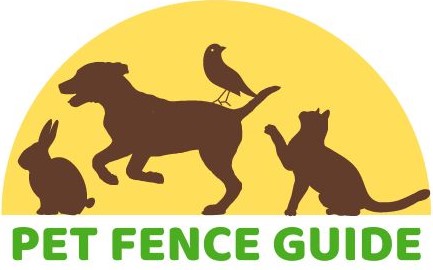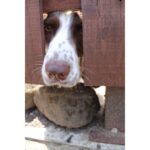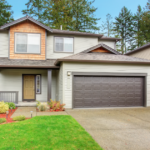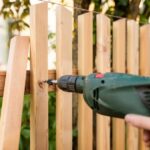If you’re a dog owner, you understand the importance of creating a safe and secure space for your furry friend. Indoor dog fences are the key to achieving this, allowing your pet to roam freely while keeping them safe from potential hazards. In this comprehensive guide, we’ll explore everything you need to know about indoor dog fences, from the types available to training techniques and real-life success stories.
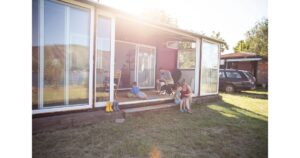
I. A Brief Overview of the Importance of Indoor Dog Fences
Table of Contents
ToggleDogs are curious creatures by nature, and they love to explore their surroundings. However, this curiosity can sometimes lead them into dangerous situations. Indoor dog fences play a vital role in keeping your pet safe within the confines of your home, ensuring that they can enjoy their freedom without encountering harm.
Creating a secure space indoors for your dog is not just a convenience; it’s a necessity. Dogs, especially when left unsupervised, can find themselves in situations that put their well-being at risk. Whether it’s getting into harmful substances, chewing on electrical cords, or venturing into off-limits areas, the potential dangers are numerous. That’s where indoor dog fences come to the rescue.
The Relevance of Creating a Safe Space for Your Dog Indoors
As a responsible dog owner, your pet’s safety and well-being are paramount. Dogs are like family members, and it’s your duty to ensure their comfort and protection. Here are some key reasons why creating a safe space for your dog indoors is crucial:
Preventing Accidents: Indoor dog fences can significantly reduce the chances of accidents. They keep your dog away from hazards such as toxic substances, sharp objects, and areas where accidents could occur.
Supervision: While you can’t always be with your dog, indoor fences provide a way to supervise them even when you’re not in the same room. This ensures you can respond quickly to any unusual behavior or signs of distress.
Dog’s Well-Being: Dogs are creatures of habit and thrive on routine. Having a designated space indoors provides them with a sense of security and structure, promoting their overall well-being.
Peace of Mind: Knowing that your dog is safe and secure while you’re away or busy with other tasks gives you peace of mind. You can focus on your work or daily activities without worrying about your pet’s safety.
Minimizing Stress: Some dogs may become anxious or stressed when they have too much freedom in a large, uncontrolled space. Indoor dog fences create a defined area that can help reduce stress and anxiety.
Protection of Valuables: Indoor fences can also prevent your dog from damaging furniture, electronics, or other valuable items when they’re unsupervised.
Training Aid: Indoor dog fences are useful for house training and teaching boundaries. They establish clear limits for your dog’s behavior and movement.
II. Types of Indoor Dog Fences
When it comes to indoor dog fences, there are several options to choose from, each with its own set of advantages and disadvantages. Let’s take a closer look at the most popular types:
A. Playpens
Playpens offer a contained and secure space for your dog to play and relax. They are particularly useful for puppies and smaller breeds. Playpens are versatile and easy to set up, giving your dog a designated area to call their own.
B. Gates
Gates are a versatile option, allowing you to section off specific areas in your home. They are easy to install and provide a visual barrier for your dog, creating clear boundaries. This can be especially helpful when you want to keep your pet out of specific rooms or areas.
C. Invisible Fences
Invisible fences use a boundary created by an underground wire or wireless signals to keep your dog within a designated area. This option offers an unobstructed view of your space but requires training to ensure your dog understands the boundaries. It’s a great choice for those who want to maintain an open, uncluttered living space while keeping their dog safe.
D. Exercise Pens
Exercise pens are larger than playpens, offering more room for your dog to move around. They are excellent for dogs that need more exercise and space to play. Exercise pens are suitable for both indoor and outdoor use, providing flexibility for different environments.
E. Adjustable Barriers
Adjustable barriers, such as expandable gates, are versatile solutions that can be used to block off hallways, staircases, or other openings. They are easy to install and can be adjusted to fit various widths.
F. Freestanding Fences
Freestanding fences do not require installation, making them a convenient option. They are often made of materials like wood or metal and can be used to enclose specific areas within your home.
III. Choosing the Right Indoor Dog Fence
Selecting the right indoor dog fence is crucial for the safety and comfort of your pet. Consider the following factors:
Dog Size, Breed, and Behavior: The needs of a small, calm breed will differ from those of a larger, more active dog. A fence should accommodate your dog’s size, energy level, and tendencies.
Budget Considerations: Determine your budget for the indoor fence, keeping in mind that it’s an investment in your pet’s safety. While there are various options available, you can find a suitable fence within your price range.
Measuring Your Indoor Space: Accurate measurements ensure that you choose the right fence size. Before making a purchase, measure the space you plan to enclose to make sure the fence fits perfectly.
Factors to Consider When Selecting an Indoor Dog Fence
Choosing the right indoor dog fence involves considering various factors to meet your dog’s specific needs. Here are some important aspects to keep in mind:
Dog’s Size and Activity Level: A small, sedentary dog may require less space than a large, active dog. Consider your dog’s breed, size, and activity level when choosing a fence.
Type of Space: Assess the space where you intend to place the indoor fence. Is it a single room, a hallway, or an open area? The type of space will influence your choice.
Training Requirements: Different fences may require varying levels of training for your dog to understand and respect the boundaries. Take into account the time and effort you’re willing to invest in training.
Durability: Choose a fence that is durable and can withstand your dog’s activity. This is especially important if you have a larger or more energetic dog.
Budget: Indoor dog fences come in a range of price points. Set a budget that suits your financial considerations, but remember that quality is an important factor in ensuring your dog’s safety.
Aesthetic Appeal: Some dog owners prefer indoor fences that blend well with their home decor. Consider the visual appeal of the fence, especially if it will be a permanent fixture in your home.
Ease of Installation: If you’re not particularly handy, you may want to opt for a fence that is easy to install without professional help.
Portability: If you plan to move the fence to different locations within your home, a portable or freestanding fence might be the best choice.
IV. Setting Up Your Indoor Dog Fence
Once you’ve chosen the ideal indoor fence, it’s essential to set it up correctly to ensure its effectiveness. Here’s a step-by-step guide:
Choose the Right Location: Position the fence where it provides the most safety and convenience for both you and your dog. Consider your dog’s favorite areas and the spaces you want to keep off-limits.
Follow Installation Instructions: Carefully follow the manufacturer’s guidelines to install the fence. Proper installation is crucial for the fence to function as intended. Make sure to anchor it securely to prevent your dog from knocking it over.
Safety Precautions: Ensure that there are no potential hazards within the enclosed area, such as sharp objects, toxic plants, or items that your dog could chew or swallow. Safety should be a top priority. Remove any hazards from the enclosed space.
Visual Cues: Some fences, like gates, provide visual cues to your dog, making it clear where the boundaries are. If you’re using an invisible fence, make sure your dog understands the training flags and any audible signals. Your dog should be able to identify the boundaries through visual or auditory cues.
Test the Fence: Before giving your dog free rein in the enclosed area, conduct a test to ensure the fence is working correctly. For invisible fences, verify that the collar is responding to the boundaries, and for physical fences, check that there are no gaps or openings your dog could squeeze through.
V. Training Your Dog for the Indoor Fence
Training your dog to understand and respect the boundaries of the indoor fence is a crucial step. Here’s how to do it effectively:
Introduction: Gradually introduce your dog to the enclosed area. Let them explore while supervising their behavior. Use positive reinforcement, such as treats and praise, to create a positive association with the enclosed space. Start with short periods of time in the enclosure, gradually increasing as your dog becomes more accustomed to it.
Boundary Respect: Teach your dog to recognize the fence’s limits. Use verbal commands to indicate when they are approaching the boundary, and reward them for staying within the designated area. Make sure your dog understands that crossing the boundary is not permitted.
Positive Reinforcement: Consistently use positive reinforcement methods to encourage your dog to stay within the boundaries. When your dog follows the rules, offer treats, toys, and verbal praise. This helps reinforce the idea that staying within the fence is a rewarding and safe behavior.
Supervision: While training is essential, never leave your dog unsupervised during the initial stages of using the indoor fence. Continuous supervision ensures that your dog is safe and well-adjusted to their new boundaries. Gradually, as your dog becomes more accustomed to the fence, you can extend the duration of unsupervised time.
Correction: For invisible fences, the collar emits a warning signal followed by a correction (typically a static stimulation) when your dog approaches the boundary. Ensure that your dog understands the connection between the warning signal and the correction. The correction should not cause fear but act as a deterrent to crossing the boundary.
Consistency: Consistency in training is crucial. Use the same commands and rewards consistently to reinforce your dog’s understanding of the boundaries.
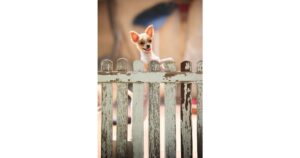
VI. Maintaining Your Indoor Dog Fence
Proper maintenance is essential to keep the indoor fence in good condition and ensure your dog’s safety. Regular maintenance and checks include:
Cleanliness: Regularly clean the fence and the enclosed area to maintain a hygienic environment. This is especially important if your dog has accidents within the space. Clean any messes promptly to prevent odors and maintain a clean and healthy environment for your dog.
Inspection and Repairs: Check for wear and tear, and make any necessary repairs promptly. Over time, fences may experience minor damage or wear, such as loose panels, broken latches, or frayed wires in invisible fences. Regular inspection and maintenance prevent potential issues and keep your dog safe.
Safety Checks: Routinely inspect the fence and its surroundings for potential dangers. Look for any hazards that your dog might encounter or interact with. Ensure that there are no sharp objects, toxic substances, or items that could pose a choking hazard. This includes keeping cords, cables, and small objects out of your dog’s reach.
Battery Replacement: For invisible fences that use batteries, regularly replace the batteries in your dog’s collar to ensure that the correction signal is functioning properly.
Weatherproofing: If your indoor fence is used in outdoor spaces, ensure it is weatherproofed to withstand the elements.
Regular Training Reinforcement: Occasionally, remind your dog of the boundaries and reinforce training to ensure they continue to understand and respect the fence.
VII. Indoor Dog Fence Accessories
Enhance your dog’s indoor experience with various accessories:
Pet Doors: Allow your dog to move freely between rooms while keeping them safe within the fenced area. Pet doors are a convenient addition that provides additional flexibility for your dog’s movement.
Play Toys: Keep your pet entertained and active with a selection of toys. Interactive toys, chew toys, and puzzles can help prevent boredom and encourage mental stimulation. Having a variety of toys within the enclosed area can make it an engaging and enjoyable space for your dog.
Dog-Friendly Furniture: Consider incorporating dog-friendly furniture or bedding within the enclosed area. This can make the space comfortable and appealing for your dog. Soft beds, blankets, and cozy resting places can make the enclosed area a cozy retreat for your furry friend.
Feeding and Watering Stations: If your dog will be spending significant time within the enclosed area, consider setting up a designated feeding and watering station. This ensures your dog has easy access to food and water without the need to leave the enclosed space.
Potty Area: For puppies or dogs that may need access to a designated potty area, set up an appropriate spot within the enclosed space. Use puppy pads or a small patch of artificial grass to create a dedicated potty area. This can be especially helpful for house training.
VIII. Benefits of an Indoor Dog Fence
Indoor dog fences offer numerous advantages for both pets and owners. These include:
Safety: Protect your dog from potential hazards, both inside and outside the home. The fence acts as a protective barrier.
Comfort: Create a secure and cozy environment for your pet. Dogs thrive on a sense of security and a designated space that they can call their own.
Convenience: Give your dog the freedom to move without constant supervision. Indoor fences allow you to focus on your tasks and daily activities while ensuring your dog’s safety.
Training Aid: Indoor dog fences are excellent training aids. They teach your dog boundaries, which is essential for obedience training and housebreaking.
Versatility: Indoor fences are versatile and can be used in various indoor settings, making them suitable for different living spaces and dog breeds.
Flexibility: They provide flexibility for dog owners, allowing you to section off areas temporarily when needed, such as when you have guests or need to clean specific spaces.
IX. Potential Challenges and Solutions
Owning an indoor dog fence comes with its own set of potential challenges, but rest assured that solutions and troubleshooting methods are available. Some common issues that dog owners might encounter include escape attempts by their furry companions. However, there are effective ways to address these concerns.
One of the primary challenges is that some dogs are particularly skilled at finding weak spots in the containment system or attempting to breach the boundaries. To address this, it’s essential to ensure that your indoor dog fence is properly installed and maintained. Regularly inspect the perimeter to identify any potential issues like loose wires or damaged components
Conclusion
In conclusion, an indoor dog fence can be a valuable addition to any pet owner’s home. It offers a safe and effective way to establish boundaries and keep your furry friend out of certain areas while ensuring their well-being and freedom. Whether you’re looking to protect your furniture, keep your pup away from hazardous areas, or simply provide them with a designated space, indoor dog fences can meet a variety of needs.
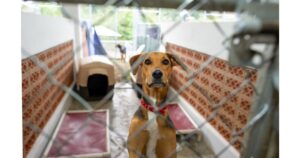
When choosing an indoor dog fence, it’s essential to consider your dog’s size, temperament, and specific requirements. With a variety of options available, from traditional baby gates to high-tech electronic systems, there is a solution to fit every household. The key is to find the right balance between providing your dog with a secure and comfortable living environment while maintaining your peace of mind.
Ultimately, an indoor dog fence can improve the harmony and safety of your home, making it a win-win for both you and your beloved pet. By setting clear boundaries and using positive reinforcement, you can create a loving and structured environment that allows your dog to thrive while also keeping your home in great condition. So, whether you’re a seasoned dog owner or a new puppy parent, consider incorporating an indoor dog fence into your home to enjoy the many benefits it has to offer.
